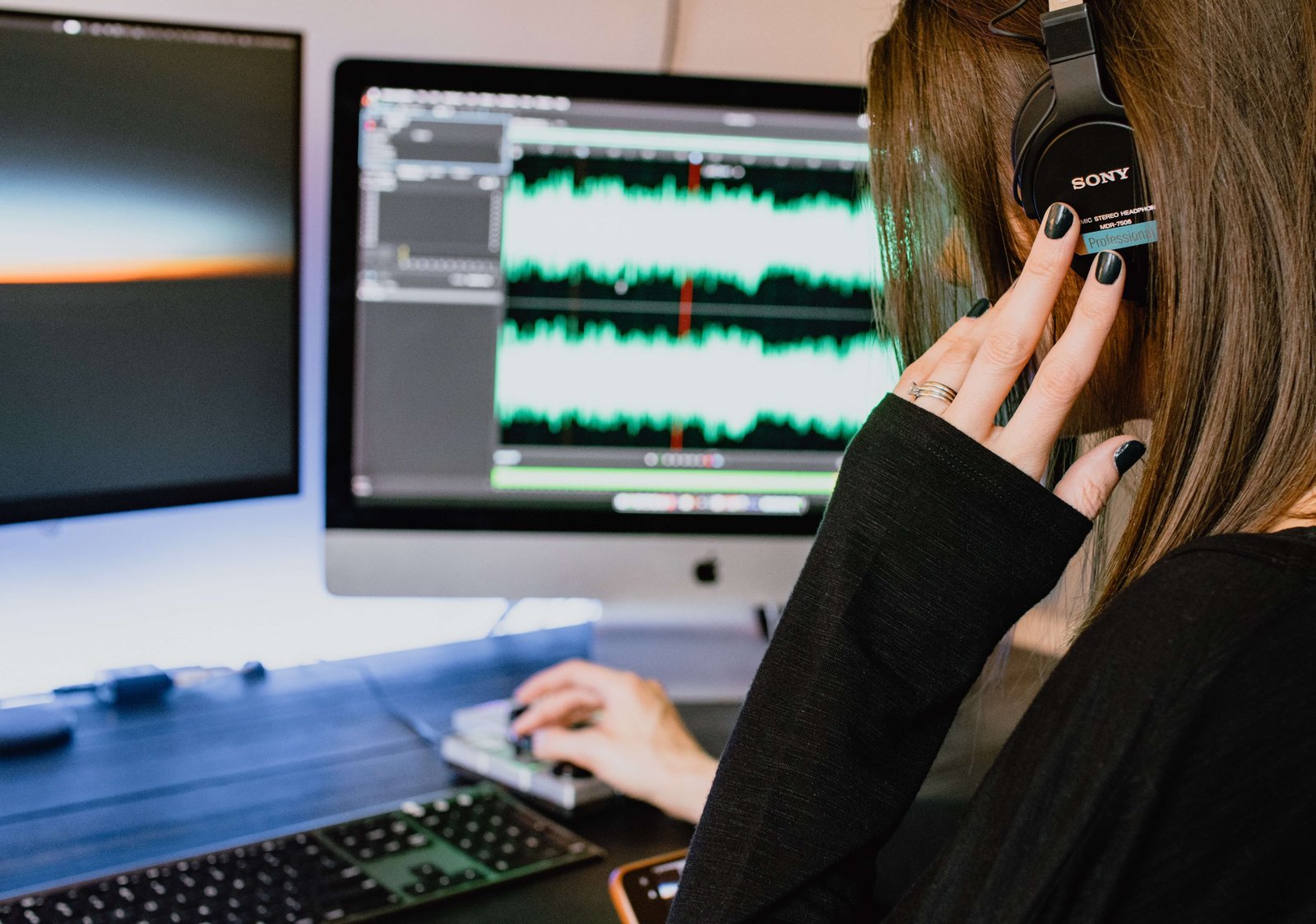AI Voices: A Critical Gateway to Media and Entertainment Going Forward

Text to speech software has been a real game-changer ever since its inception back in the 1900s. It has helped several businesses boost their sales, provide top-notch customer service, extend the reach of their content, and enhance accessibility, among other things. In today’s voice-first world, text to speech is opening doors to many possibilities across different industries, and media and entertainment (M&E) is no exception. With AI voices, M&E brands can create custom voice avatars for everything from commercials to teasers to movie trailers to podcasts, or any digital experience requiring voice.
For years, brands have relied on famous actors to provide narration for ads, which creates a sense of familiarity and imparts a desired tone. But actors can be expensive, and their voices usually have a limited shelf life for commercial use. A synthetic voice offers an effective alternative.
An average voice actor charges $50-$100 for every 100 words. Some even charge thousands of dollars depending on the project. And then, there is the additional cost of securing commercial or distribution rights to the audio. With AI voices for TV and other M&E segments, filmmakers, TV producers, and content creators can generate realistic voiceovers at a fraction of the cost and time, plus receive the rights to own, distribute, and commercialize the audio as they wish.
Furthermore, AI voices make the process of editing voiceovers, quick and easy. Users can simply make the necessary changes to their script and modify the AI voice automatically. Synthetic voices also bridge the gap of brands not having the time and budget to schedule multiple voice actors, recording studios, re-takes, and post-production by providing high-quality narration and convincing audio options.
Let’s take a closer look at the different ways in which synthetic voices and voice cloning can help the different segments of M&E businesses succeed.
For Advertisers
Ad producers, for example, can gain more control over the audio part of their projects using text to speech. How? For any given campaign, advertisers might want to create 2,000 permutations of the same ad. Traditionally, this would require multiple professional voice actors to record voiceovers in different languages. However, using AI voices, advertisers can produce ads in various languages in order to cover all of the localities where a brand’s products are sold.
With AI, they can simply switch between languages or tweak the accent of a voice as required depending on the region to produce different permutations of the same ad, in a few clicks. The same voice can also be used across multiple languages, which is a boon to any brand as they can benefit from consistency.
TTS is also more scalable than traditional voice recordings. Need a last-minute script change? No problem. Simply type the changed text into your TTS engine; no need to book the original talent for a re-recording session—assuming they’re still available and interested, no need to rent a studio or speed thousands of dollars of recording equipment.
For TV producers and filmmakers
There are numerous cases where a voice actor’s recording might not be up to the mark, or they could quit during dubbing/ production, or pass away. Through voice cloning technology, TV producers and filmmakers can easily resurrect voices from the past, create a spot-on match of the voice of celebrities or child actors who can’t be present at the recording site, and even include additional dialogues after filming instead of bringing an actor back to the recording studio for re-recording. As such, creatives can make content sound exactly the way they want it to without sacrificing voice quality and improve their brand performance.
Audio dubbing

AI custom voices also play a critical role in making the dubbing process more efficient and natural. Dubbing has long been a painstaking exercise; the whole process could take months. Traditionally, a studio or local distributor that wants to have a local-language release would pay large sums of money to translate a script, hire a set of voice actors to play the characters, rent out engineering equipment, put actors through numerous voice takes, record them, and then splice their readings back into the original video—a mighty grapple to achieve a smooth final product.
With text to speech software, that's not the case. The studio or local distributor can simply feed an actor’s voice to their voice synthesis software, whose neural network learns and digests the vocal information and applies it to a digital translation of the script, enabling the AI to deliver perfectly timed lines from the film and drop them into the action. The whole process would only take days, if not weeks. TV producers and filmmakers can also use voice cloning to create custom AI voice clones of actors and actresses and create multiple language versions of the same film or series.
International markets have become more important than ever for film and television. Shows in foreign languages are garnering more attention worldwide. TV producers and filmmakers can use AI custom voices to automatically dub these shows in multiple languages, without losing the quality of the speech and achieving all the phonetics correctly. This gives studios what they want and gives consumers a unique experience.
As the demand for localized and translated spoken word content explodes—whether it’s in the form of podcasts or audiobooks—AI-based text to speech tools can satisfy that need.
For gaming designers
Within the entertainment industry, gaming is another segment that can benefit immensely from synthetic voices. TTS can be used to not only create and give custom voices to the different characters in video games but also plays a huge role in game prototyping.
Custom character voices

Today’s neural voices can deliver the character nuances and subtleties previously available only from human actors voicing the character conversations. In fact, with text-to-speech technology, it is possible to bring gaming characters to life and mimic the speaking style of the natural human voices through emotions such as laughter, empathy, sadness, and other paralinguistic sounds and expressions.
AI-generated character voices can impart emotion, adopt a specific speaking style, and represent nuances in character personality to give life to stories and games. This helps provide the immersive experience games demand while giving video game producers a cost-effective alternative to hiring voice talent or even Hollywood celebrities to voice game characters.
That said, once a custom voice has been created using voice cloning technology, that same digital file can be saved for use in future games that use voice recognition or as the foundation for creating other characters and story narration.
Game prototyping
When it comes to the prototyping phase of game development, TTS allows designers and producers to swap lines of dialog and listen to variations in real-time to ensure that they accurately represent the character, scene, and story. Designers can also make adjustments in this phase to fine-tune the storyline without the pressures and constraints of the studio voiceover environment.
Furthermore, the multilingual capability of voice generation software allows gaming designers to have scripts ‘read’ in many other languages apart from English using multiple genders and accents to ensure that dialog is consistent across audiences and demographics. To put it simply, using synthetic voices in game prototyping helps shorten the time and money spent in production significantly and allows game developers to launch a game sooner.
For social media content creators
As a content creator, it’s important to create impression-grabbing podcasts and audiobooks to stand out from the competition. Using text to speech, content creators can automate audiobook and podcast narration. For example, each character in a story can be assigned a different AI voice depending on its traits and nature. In fact, an author can also use voice cloning technology to create a custom voice clone of their own voice and use it for narrating their book or podcast. This allows content creators to not only save time spent on recording and editing their audiobooks manually but also thousands of dollars on buying expensive recording equipment or hiring a professional narrator to do the recording. With synthetic voices, authors can have an audiobook version of their book ready for launch, within a few hours or days.
That said, not everybody enjoys having a podcast in their own voice. In such cases, synthetic voices can be used to narrate the podcast and keep the audience engaged. With TTS software’s multilingual capability, authors and podcasters can also create their content in multiple languages and reach a wider audience.
Murf AI: An effective alternative to robotic-sounding synthetic voices
Many M&E companies have already jumped on the AI-generated voice bandwagon, using synthetic voices to make their content more engaging and entertaining. Playing its part in helping these companies augment their creativity and growth is Murf’s text-to-speech tool that simplifies the process of creating voiceovers for a variety of use cases across different industries, including but not limited to advertising, eLearning, marketing, podcasting, media and entertainment, automotive, eCommerce, and food and beverage.
Murf side-steps the need to acquire difficult technical knowledge and skills to create voiceovers and empowers content creators to generate high-quality natural-sounding voiceovers in a matter of minutes. Murf’s voice AI platform makes it possible to create movies, TV shows, and video games with natural-sounding voiceovers and allows for more creative freedom and new forms of expression—all rooted in consent and transparency.
Creating the perfect voiceover for entertainment using Murf's custom voices is simple. It opens up new possibilities for entertainment and storytelling.
Step 1: Upload an existing script or type in your text to Murf's text editor.
Step 2: Choose the synthetic voice of your choice from Murf's extensive library of 120+ human-like AI voices in 20+ languages that suit your content needs.
Step 3: Use customization features available in Murf such as emphasis, pause, volume, speed, and pronunciation to add more depth to your content.
Step 4: You can also include background music to your content piece by choosing a soundtrack from Murf's selection of royalty-free background music or upload your own music and sync it with the voiceover.
Step 5: Click on 'Build Audio' to render the final audio file in the required format. And, voila! Your realistic-sounding voiceover is ready for use.
Serving as a cost-effective and time-intensive voice generator, Murf offers film & TV creators, among other content creatives, the opportunity to innovate when it comes to using synthetic voices in creative ways. The web platform also provides voice cloning services through which M&E businesses can replicate anybody’s voice to create a perfect match. These custom voice clones can help your brand speed up the production of quality audio content. This includes dubbing an actor's voice in post-production to bringing back the voice of an actor who passed away, providing creators the ability to scale any voice.
Just provide a high-quality recording of the voice you’d like to replicate to get started. With Murf, businesses can create custom voices for everything from audio advertising to website content to tv commercials to product or service videos, and more in the language they want. All in all, Murf is a tool for augmenting, rather than replacing, human creativity.



